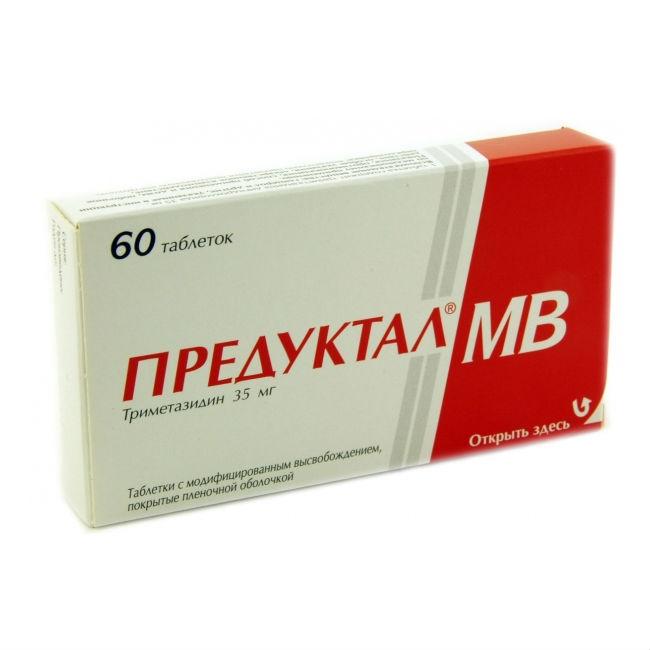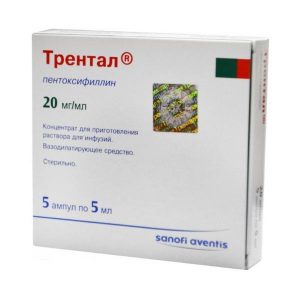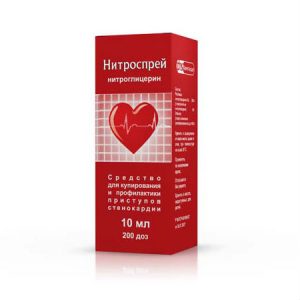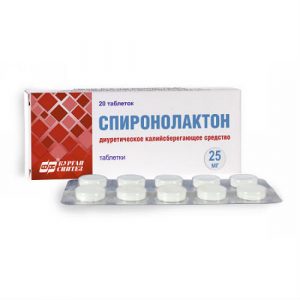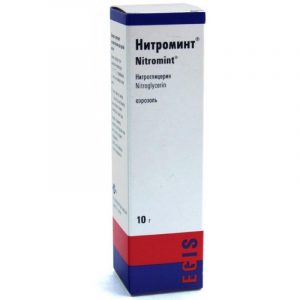Description
Release form
modified release coated tablets.
Packing
60 pcs.
Pharmacological action of
Trimetazidine prevents a decrease in the intracellular concentration of adenosine triphosphate (ATP) by maintaining the energy metabolism of cells in a state of hypoxia. Thus, the preparation ensures the normal functioning of membrane ion channels, transmembrane transfer of potassium and sodium ions and preservation of cell homeostasis.
Trimetazidine inhibits fatty acid oxidation by selectively inhibiting the 3-ketoacyl-CoA-thiolase (3-CAT) enzyme of the mitochondrial long chain fatty acid isoform, which leads to increased glucose oxidation and accelerated glycolysis with glucose oxidation, which protects the myocardium from ischemia.
Switching energy metabolism from fatty acid oxidation to glucose oxidation underlies the pharmacological properties of trimetazidine.
It is experimentally confirmed that trimetazidine has the following properties:
supports energy metabolism of the heart and sensorineural tissues during ischemia
reduces the severity of intracellular acidosis and changes in the transmembrane ion flux resulting from ischemia
lowers the level of migration and infiltration of polynuclear neutrophils in ischemic and reperfused heart tissues
does not directly affect the size of the myrd hemodynamic indicators.
In patients with angina pectoris, trimetazidine:
increases coronary reserve, thereby slowing the onset of exercise-induced ischemia, starting from the 15th day of therapy
limits the fluctuations in blood pressure caused by exercise, without significant changes in heart rate,
significantly reduces the frequency of angina attacks and the need for short-acting nitroglycerin
improves left ventricular contractility in patients with ischemic dysfunction.
In a 2-month clinical study, the addition of 35 mg modified-release trimetazidine tablets to atenolol therapy at a dose of 50 mg 12 hours after oral administration significantly slowed the onset of ischemic depression of the ST segment during exercise tests.
Pharmacokinetics
After oral administration, trimetazidine is rapidly absorbed and reaches its maximum plasma concentration after about 5 hours.
Over 24 hours, the plasma concentration remains at a level exceeding 75% of the concentration determined after 11 hours. The equilibrium state is reached after 60 hours. Eating does not affect the bioavailability of trimetazidine.
Distribution volume is 4.8 l / kg, indicating a good distribution of trimetazidine in the tissues (the degree of binding to blood plasma proteins is quite low, about 16% in vitro).
Trimetazidine is excreted mainly by the kidneys, mainly unchanged.
The half-life in young healthy volunteers is about 7 hours, in patients over 65 years old – about 12 hours.
Renal clearance of trimetazidine directly correlates with creatinine clearance (CC), hepatic clearance decreases with age of the patient.
It is shown that in elderly patients, when taking a daily dose of 2 tablets of trimetazidine in two doses, increased exposure to plasma does not lead to any more pronounced effects compared with placebo.
Indications
Long-term therapy for coronary heart disease: prevention of attacks of stable angina as part of mono- or combination therapy
Contraindications
hypersensitivity to any of the components of the drug
Parkinson’s disease, symptoms of parkinsonism, tremor, restless legs syndrome and other associated motor disorders
severe renal failure (creatinine Cl less than 30 ml / min) – clinical data are limited patients under 18 years of age (due to the lack of sufficient clinical data, drug administration is not recommended).
Caution: patients with moderate renal failure (Clcreatinin 30-60 ml / min) use in patients older than 75 years.
Special instructions
Preductal® MV is not intended for the relief of angina attacks and is not indicated for the initial course of therapy for unstable angina pectoris or myocardial infarction at the prehospital stage or in the early days of hospitalization.
In the event of an attack of angina pectoris, treatment (drug therapy or a revascularization procedure) should be reviewed and adapted.
Preductal® MV can cause or worsen symptoms of parkinsonism (tremor, akinesia, increased tone), therefore, regular monitoring of patients, especially the elderly, should be carried out. In doubtful cases, patients should be referred to a neurologist for an appropriate examination.
With the appearance of motor disorders, such as symptoms of parkinsonism, restless legs syndrome, tremors, instability in the Romberg position and the “unsteadiness” of the gait, Preductal®MV should be permanently abolished.
Such cases are rare and symptoms usually disappear after discontinuation of therapy: in most patients, within 4 months after discontinuation of the drug. If symptoms of parkinsonism persist for more than 4 months after discontinuation of the drug, consult a neurologist.
There may be cases of a fall associated with instability in the Romberg posture and a “shaky” gait or a marked decrease in blood pressure, especially in patients taking antihypertensive drugs (see “Side effects”).
Caution is advised to administer Preductal® MV to patients who may increase its exposure:
for moderate renal failure (see Pharmacokinetics and Dosage and Administration)
for elderly patients over 75 years of age (see “Dosage and administration”).
Influence on the ability to drive vehicles and perform work requiring a high speed of psychomotor reactions. Clinical trials did not reveal the effect of the drug Preductal MV on hemodynamic parameters, however, during post-registration use there were cases of dizziness and drowsiness (see “Side effects”), which may affect the ability to drive vehicles and perform work requiring increased speed physical and mental reactions.
Composition
1 tablet contains:
Active ingredient:
trimetazidine dihydrochloride 35 mg
Excipients:
calcium hydrogen phosphate dihydrate – 80.9 mg
povidone – 8.7 mg
magnesium 1 – srdlpp 74 mg srdlpp 74 mg srdlpp colloidal dioxide – 0.4 mg
macrogol 6000 – 0.1317 mg
Shell:
dry premix for pink shell N5361, consisting of titanium dioxide – 0.6908 mg, iron oxide red – 0, 0103 mg, glycerol – 0.2191 mg, hypromellose – 3.6414 mg, magnesium stearate – 0.2191 mg, macrogol 6000 – 0.0876 mg
Dosage and administration
Inside, whole, without chewing, washed down with water, 1 tablet. 2 times a day, morning and evening, with meals.
Duration of treatment is determined by the physician.
The maximum daily dose is 70 mg.
Side effects of the
From the digestive system: often – abdominal pain, diarrhea, dyspepsia, nausea, vomiting of unspecified frequency – constipation.
General disorders: often – asthenia.
From the side of the central nervous system: often – dizziness, headache of unspecified frequency – symptoms of parkinsonism (tremor, akinesia, increased tone), instability in the Romberg position and “shakiness” of the gait, restless legs syndrome, other motor disorders associated with them, usually reversible after discontinuation of therapy, sleep disturbances (insomnia, drowsiness).
From the skin and subcutaneous fat: often – skin rash, itching, urticaria of unspecified frequency – acute generalized exanthematous pustulosis, Quincke’s edema.
From the CCC side: rarely – palpitations, extrasystole, tachycardia, marked decrease in blood pressure, orthostatic hypotension, which may be accompanied by general weakness, dizziness, or loss of balance, especially while taking antihypertensive drugs, flushing of the face.
From the circulatory and lymphatic systems: unspecified frequency – agranulocytosis, thrombocytopenia, thrombocytopenic purpura.
From the liver and biliary tract: unspecified frequency – hepatitis.
Drug interaction
Drug interaction of the drug Preductal® MV is not described.
Overdose
There is only very limited information on an overdose of trimetazidine.
In case of overdose, symptomatic therapy should be given.
The Expiration of
is 3 years.
Deystvuyuschee substances
Trimetazidine
terms of sale from
pharmacies Prescription
Dosage form
tablet
Indications
Coronary heart disease, angina
Serv Rus OOO, Russia
